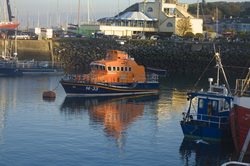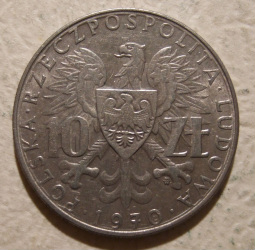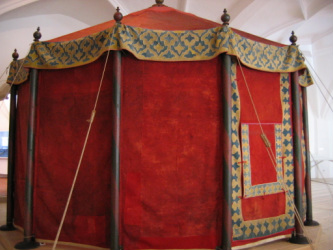IRELAND

The following articles about Ireland, Poland and Germany are from kids.nationalgeographic.com. Go to this amazing site to explore more about the world in which we live...
- Ireland is an island nation on the westernmost edge of Europe. It is the continent's second largest island (after Great Britain). The Republic of Ireland occupies 80 percent of this landmass, while a large chunk of land in the north is part of the United Kingdom.
- Ireland is known for its wide expanses of lush, green fields. In fact, its nickname is the Emerald Isle. But there are also large areas of rugged, rocky landscape. About 15,000 years ago, Ireland was completely covered by thick glaciers. The movement of these giant sheets of ice stripped the soil, leaving huge tracts of flat, limestone pavement.
- The midlands and west coast of Ireland are dotted with damp peat bogs, the soggy remains of dried-up ancient lakes left by the glaciers. Ireland's highlands rise mainly in the southwest, often ending at sheer cliffs that plunge thousands of feet into the Atlantic Ocean.
- NATURE
The Irish have a great affection for nature and rural life. The country's first coins even featured pictures of animals. Low levels of development and pollution in Ireland have left most of the nation's open spaces relatively undisturbed. - Did you know that there are no wild snakes in Ireland? The sea has stopped many animals common on mainland Europe from reaching the island. There are also only two wild mouse species, one type of lizard, and just three kinds of amphibians.
- Irish wildlife is protected by government conservation programs. To preserve natural habitat, the government has established six national parks and hundreds of national heritage areas throughout the country.
- HISTORY
Archaeologists think the first people to settle in Ireland arrived around 6000 B.C. By 3500 B.C., settlers were using stone tools to clear farmlands. Around 700 B.C., a diverse and technologically advanced culture from central Europe called the Celts began to settle the island. They would thrive there for nearly 2,000 years. - In the ninth century A.D., Viking invaders began raids into Ireland. They established settlements that later became some of the country's main cities, including the capital, Dublin. The Vikings and Celts fought often for 200 years until a battle in 1014 united the country. Peace broke down quickly though, and Ireland was divided into many kingdoms.
- In 1170, Norman Vikings who had taken control of England invaded Ireland and made it an English territory. In the early 1600s, England's official religion became Protestant while most Irish remained Roman Catholic. This would create tensions that would eventually lead to revolution and Ireland's independence.
- By the 1820s, British laws unfair to Catholics had sparked a mass movement for Irish sovereignty. In 1829, many of those laws were overturned, but Ireland still wanted freedom. In 1922, after violent uprisings, the Irish Free State was created within the British Empire.
- In 1948, most of Ireland became an independent country, while six mainly Protestant counties in the northeast remained a British territory.
- PEOPLE AND CULTURE
Ireland is a nation of storytellers. The tradition dates back to Celtic bards, who would record and recite the country's history. Many famed writers come from Ireland, including four winners of the Nobel Prize for literature. The Irish also excel in music and sports. - GOVERNMENT AND ECONOMY
The government of Ireland consists of an elected parliament, which makes the laws, and a president, who is head of state. The head of the government is the Taoiseach (pronounced tee-shuck), which means "chief." The Taoiseach is the leader of the political party with the most parliament members. - For most of its history, Ireland's economy has been based on farming and agriculture. But since the late 1950s, government efforts to attract business have turned the country from one of Europe's poorest nations to its second wealthiest. The amazing turnaround earned Ireland the nickname "Celtic Tiger."
- FAST FACTS
Official Name: Éire, Republic of Ireland
Form of government: Constitutional Democracy
Capital: Dublin
Population: 4,109,086
Monetary unit: Euro - Official languages: Irish/English
Area: 26,592 square miles (68,890 square kilometers)
Major mountain ranges: Macgillycuddy's Reeks, Wicklow Mountains
Major rivers: Shannon, Liffey, Boyne, Moy, Barrow
POLAND

- FACTS ABOUT POLAND:
- GEOGRAPHY
Poland is located at the heart of the European continent. The country is a meeting place not only for cultures and ideas, but also for conflict and confrontation. - Poland's borders have changed many times over the centuries. Its present borders were set after World War II ended in 1945. Poland has seven neighbors: Germany, Slovakia, the Czech Republic, Lithuania, Belarus, Ukraine, and Russian Kaliningrad.
- Poland has a variety of striking landscapes, from the sandy beaches of the Baltic Sea coast in the north and the rolling central lowlands to the snowcapped peaks of the Carpathian and Sudeten Mountains in the south. Poland has more than 1,300 lakes throughout the country.
- NATURE
Poland's large tracts of forested land provide refuge for many animals, including wild boar and the European bison, called a wisent. Once extinct in the wild, the wisent was reintroduced using animals bred in captivity. Poland's Bialowieza Forest is home to the world's largest population of these rare bovines. - Poland's forests are the ideal habitat for many of Europe's endangered species, including brown bears, wild horses, chamois goats, Eurasian lynxes, and the continent's largest population of gray wolves.
- Wars and pollution, however, have taken a toll on Poland's land and have hurt the populations of animals that rely on these habitats. The government is trying to reverse the damage. There are now 23 national parks in Poland, 1,269 nature reserves, and a hundred bird sanctuaries.
- HISTORY
Poland's first civilization dates back to about 2000 B.C., but it wasn't until A.D. 966 that the region's tribes became united under the Slavic chief Mieszko, first prince of Polska. - In the late 1500s, Poland and Lithuania joined together and formed a large, powerful commonwealth with elected kings. By the late 1700s however, Poland had been weakened by a series of wars with its neighbors. In 1795, it was conquered and divided up among Russia, Prussia (now Germany), and Austria. Poland ceased to exist as a country for 123 years.
- In 1918, after World War I, Poland was restored as a country. But just 21 years later, Germany and the Soviet Union attacked, intent on dividing Poland between them. The aggression marked the beginning of World War II and led to nearly 45 years of Soviet occupation.
- In 1980, Polish workers began protesting communist rule under the now-famous union banner of Solidarity. In 1989, after nearly a decade of clashes between the government and Solidarity activists, democratic elections were held, and the country was renamed the Republic of Poland. In 1990, the Polish Communist Party was dissolved.
- PEOPLE AND CULTURE
Religion is a very important part of Polish life. Almost all of the population (at least 90 percent) is Roman Catholic. In 1978, Cardinal Karol Wojtyla, archbishop of Krakow, became the first-ever Polish pope. He took the name John Paul II and was head of the Catholic Church until his death in 2005. - GOVERNMENT AND ECONOMY
Under communism, Poland became a highly industrialized country. Mining, steelworks, and machinery production are still the major industries there. - Changing from communism to a free market economy in the 1980s caused much upheaval in Poland. Even today, though most people are better off than they were under Soviet rule, wages are low and unemployment is high. Since joining the European Union in 2004 Poland's economy has grown rapidly.
- FAST FACTS
Official Name: Republic of Poland
Form of Government: Republic
Capital: Warsaw
Population: 38,518,241
Official Languages: Polish
Monetary Unit: Zloty
Area: 120,728 sq mi (312,685 sq km)
Major Mountain Ranges: Carpathians, Sudetens
Major Rivers: Vistula, Oder
GERMANY

- FACTS ABOUT GERMANY:
- GEOGRAPHY
Germany's central and southern regions have forested hills and mountains cut through by the Danube, Main, and Rhine river valleys. In the north, the landscape flattens out to a wide plain that stretches to the North Sea. Between these extremes, Germany is a country of incredible variety. - Germany's location at the heart of Europe has shaped its history both for good and bad. It borders nine neighbors, more than any other European country.
- Germany's largest wooded area, and its most famous, is in the southwest near the Swiss border. This is the Black Forest, a mountainous region full of pines and fir trees. This forest contains the source of the Danube, one of Europe's longest rivers.
- NATURE
The German government works hard to protect the country's wildlife. There are 97 nature reserves in Germany, the biggest of which is the Black Forest. Despite these efforts, though, many species are at risk of extinction, including certain species of whales, beavers, and minks. - Germany's major unspoiled habitats are in two main regions. The flat northern coast is home to sea life and wading birds, while the forested hills and mountains in the south are the best place to find wildcats, boar, ibex, and other large mammals.
- The lakes and wetlands along Germany's coastlines are important stopover points for many migrating birds. The German government has set up reserves for the birds' protection.
- HISTORY
Humans settled in northern Europe about 10,000 years ago, after the end of the last Ice Age. The first people to speak a language similar to modern German probably lived in the area about 5,000 years ago. It was still thousands of years, though, before Germany was created. - Early Germany was a patchwork of small states ruled by dukes and kings. But in 1871, the country was united, through force and alliances, by a politician named Otto von Bismarck.
- In the late 19th century Germany began competing with other European countries to set up colonies in Africa and Asia. These tensions led to World War I in 1914, the worst conflict the world had ever seen. Germany and its allies lost the war to Britain, France, and the United States.
- Adolf Hitler and his Nazi Party came to power in 1933 promising to make Germany great again. In 1939, Hitler invaded Poland, starting World War II. During the war, Hitler created camps in Germany where millions of Jewish people and others were murdered. The war ended in 1945 with the Germans' defeat and Hitler committing suicide.
- After World War II, Germany was divided into West and East. The country became the center of a standoff between the Soviet Union and Western powers. This confrontation, which lasted 44 years, was called the Cold War. In 1989, East Germany opened its borders and the Cold War came to an end.
- PEOPLE AND CULTURE
Today almost one in every ten Germans comes from a foreign country. That is more than at any time in history. The largest minority are Turkish, who started coming in the 1950s to work. About two-thirds of Germans are Christians. - Germany has been called the "Land of Poets and Thinkers." Germans are famous in all forms of art, but particularly classical music. Germany's famous composers include Bach, Brahms, Schumann, Wagner, and Beethoven.
- GOVERNMENT AND ECONOMY
After losing World War II, Germany was in ruins. West Germany recovered to become Europe's richest country, but East Germany, under communist control, fell far behind. After reunification in 1989, Germany spent billions of dollars to modernize the East. - FAST FACTS
Official Name: Federal Republic of Germany
Form of Government: Federal republic
Capital: Berlin
Population: 82,422,299
Official Language: German - Money: Euro
Area: 134,838 sq mi (349,223 sq km)
Major Rivers: Rhine, Elbe, Main, Danube
********************************************************************************************************************************
THE SOLAR SYSTEM
How much do you know about the solar system? We'll soon find out! Answer the questions
below by writing the answers in your copybook. Some
questions may not have the answer you expect.
1) What planet do scientists call Earth's sister planet?
____________________________________________________________________________
2) Mars has higher mountains and deeper canyons than any other planet.
True or false?
____________________________________________________________________________
3) Which of these planets is closest to the sun?
Mars
Mercury
Venus
Earth
4) Which planet has no solid surface?
____________________________________________________________________________
5) What is a Comet made of? (2 things)
____________________________________________________________________________
6) Saturn is the only planet with rings.
True or false?
____________________________________________________________________________
7) What is the Earth's moon called?
Luna
Puma
Far away
Uranus
8) How many moons does Mars have?
We don't know
1
2
4
